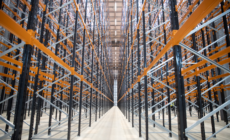-
ROSSLARE EUROPORT TARGETS HEALTH & SAFETY WITH CAMERA TELEMATICS PARTNERSHIP - 2 days ago
-
Landmark Study Reveals Wearable Robotics Significantly Boost Safety and Efficiency in Industrial Environments - July 24, 2024
-
Visku Tackle The Retail Seasonality Challenge One Pallet At A Time - July 22, 2024
-
KAMMAC AND BERGEN LOGISTICS STRENGTHEN FASHION & LIFESTYLE SERVICES IN THE UK - July 19, 2024
-
TENTBOX EXTENDS PARTNERSHIP WITH ARROWXL TO SUPPORT INCREASING DEMAND - July 17, 2024
-
The Perfume Shop improves customer journeys while driving profitability in partnership with Scurri - July 17, 2024
-
ZEROMISSION SECURES £2.3M ($3M) INVESTMENT TO ACCELERATE ELECTRIC FLEETS - July 16, 2024
-
BCMPA CELEBRATES SUCCESS OF 2024 CONFERENCE - July 15, 2024
-
Best of the Best: Jungheinrich Celebrates Triple International Award Win - July 12, 2024
-
GOPLASTICPALLETS.COM CALLS ON NEW CHANCELLOR RACHEL REEVES TO CONSIDER PLASTIC PACKAGING TAX REFORM - July 10, 2024
DataArt Retail & Distribution Technology Trends 2018:
Denis Baranov, Principal Consultant, DataArt
Consumers that prefer an omni-channel shopping and use of multiple screens, expect an outstanding customer experience across all the channels – mobile, Web, in-store, anywhere.
The biggest challenge for Retailers remains the ability to reach out to their consumers in real-time across all touch-points to deliver an outstanding customer experience. Retail marketers strive for getting cross-channel single customer view to anticipate the consumer’s needs and individual preferences and offer the products and services in a timely and individually tailored manner.
Thus, in 2018 technology will continue to serve three main objectives of the retailers:
How to acquire more consumers to beat competitors?
How to make interactions beneficial?
How to escape too much interaction?
In 2018, retailers will continue down the road to digitalization. This is being driven by growing e-commerce agendas of the leading players. Digital transformation, with the introduction of scalable agile techniques, would change not just IT landscape of retailers but their business model as a whole.
We can expect some exciting retail tech startups or solutions in the robotics space. Many retailers already use automation for their operations, and we can just assume there will be a rise of interest in this due to cost optimization.
At the same time, though, consumers are increasingly searching for personalized shopping experiences. Data analytics and machine learning can help retailers make their messages really personal. Using data to personalize customer experiences is just the beginning. Data analysis also plays a significant role behind the scenes, especially when it comes to inventory management and distribution.
The omni-channel strategy has significantly underperformed for more retailers than it was successful for. Those who are falling behind will need to invest in the technology to catch up and create a seamless experience for their clients across all channels.
Another point is that although brick-and-mortar shops have been proclaimed dead (again), they in fact seem to be morphing into something essential for the new consumer: showrooms. Customers enjoy the fact that they are able to try/test/touch products before making a decision. Combine that with access to really knowledgeable staff and traditional shopfronts might be revitalized. This however will require changes in supply change management strategies and will involve still more technology.
To sum up retailers need to be flexible, respond faster, and achieve synergy between on-line and off-line channels.
In a nutshell, to be competitive and innovative, retailers need to invest in new technologies.

































